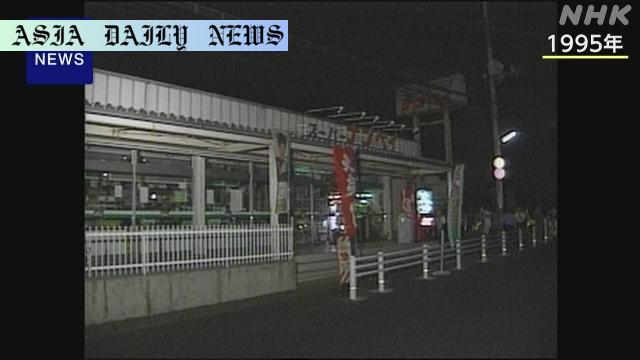Hachioji murder: 30 years since the shocking supermarket slayings in suburban Tokyo; authorities continue their call for citizens’ help.

A Shocking Tragedy
On July 30, 1995, a chilling act of violence unfolded in the suburban city of Hachioji, Tokyo, leaving a supermarket office in disarray and a community in shock. Two high school girls and a 47-year-old woman— all part-time workers— were brutally shot in the head in what investigators suspected to be a case of robbery and murder. This tragic incident, often referred to as the ‘Hachioji murder,’ has haunted the families of the victims and the wider community for over three decades. Despite relentless efforts led by the Tokyo police, the identity of the perpetrator remains a mystery to this day.
A Relentless Pursuit of Justice
Following the murders, the Tokyo Metropolitan Police mobilized unprecedented resources. Over 226,000 investigators have worked tirelessly to piece together the puzzle of that fateful day. Despite receiving 1,678 pieces of information, including 32 tips in the past year, investigators have struggled to find leads that connect directly to the free-roaming suspect. The case remains one of the most expensive and emotionally significant unsolved cases in Japan’s history.
A critical milestone came in 2010, 15 years after the incident, when the statute of limitations for robbery and murder in Japan was abolished. This legislative change, implemented just before the Hachioji case was due to expire, ensured that justice could still be served should new evidence come to light. It stands as a testament to the resolve of both authorities and citizens demanding accountability.
Citizens’ Cooperation: A Key to Solving the Mystery
In their continued pursuit, Tokyo police recently initiated a campaign to reinvigorate public interest in the case. On the 30th anniversary of the murders, over 80 individuals, including law enforcement officials, distributed fans emblazoned with an appeal for information and details of the monetary reward. The 6 million yen reward (roughly $40,000) serves as an incentive for anyone harboring knowledge about the crime to step forward. Citizens are the linchpin in solving this case; it’s through the vigilance and bravery of ordinary people that the final pieces of the puzzle might finally fall into place.
The Broader Implications of Unsolved Cases
The Hachioji murder is emblematic of the anguish caused by unresolved crimes. For the families of the victims, the lack of closure perpetuates a grief that no amount of time can fully heal. For the Tokyo police and justice system, it serves as a reminder of the arduous battle against time in criminal investigations. The advancements in forensic science and technology, combined with changes in public policy, strive to ensure that justice delayed is not justice denied.
However, the case also raises broader questions about public responsibility and the role of citizens in maintaining a safe society. Solving cold cases like this one requires more than just resources and expertise; it requires an engaged citizenry willing to come forward with information, no matter how inconsequential it may seem. Collective vigilance and cooperation remain indispensable in the face of persistent challenges to public safety.
Hope Amidst Uncertainty
As the 30th anniversary of the Hachioji murders passes, a renewed sense of urgency grips the investigation. Although decades have elapsed, hope persists among those determined to see justice served. The campaign to solicit public cooperation highlights how resilience and unwavering dedication can sustain a quest for justice over the long term. For the families, the investigators, and the community at large, the resolution of this case would offer a measure of solace and reinforce the principle that no crime, no matter how old, goes unanswered in the eyes of the law.
Commentary
The Lingering Impact of Unresolved Cases
Unsolved crimes like the Hachioji murder weigh heavily not only on the victims’ families but also on society as a whole. This tragic case has transcended its role as a local crime story to become a symbol of how unresolved injustices echo through time. The pain of the families and the frustration of investigators serve as reminders of the human cost of letting these cases linger. They compel us to examine not just how we solve crimes but also how we approach justice as a collective responsibility.
Citizen Cooperation: A Moral Imperative
One of the most striking elements of this case is the proactive call for citizen cooperation, even after three decades. It speaks to the moral fabric of society, highlighting how vital the role of ordinary individuals can become in solving extraordinary situations. Every piece of information matters, no matter how insignificant it might seem. The Tokyo Metropolitan Police’s decision to maintain the investigation’s high visibility demonstrates their commitment to engaging all sectors of the society in their pursuit of justice.
Justice Delayed but Not Forgotten
The abolition of the statute of limitations for robbery and murder stands as an extraordinary step towards ensuring accountability. It offers a glimmer of hope to families and communities affected by heinous crimes even many years after the incidents have occurred. It reminds us that while time may pass, the pursuit of justice remains timeless. However, the abolition is not enough on its own; it must be complemented by advancements in technology and steadfast dedication.
A Call to Action
As the anniversary passes, we need to ask ourselves: What more can be done? Cases like the Hachioji murder often challenge us to think deeply about societal priorities. They urge governments to allocate more resources and ensure that law enforcement agencies are equipped with both the technology and manpower needed to tackle unresolved cases. Moreover, they reiterate the importance of transparency and public engagement in achieving justice for all.


